Day 1: Monday 18 April 2011
You arrive in your office at the NRA to find four reports of AEFIs (one fatal) on your desk, which relate to the current (SIA) measles immunization programme. Two of them have come from the Province of Karoom, one from Weston and one from Kyogo. Each report has been submitted on the standard reporting form from the immunization centre and has been screened by the regional health officer from the province, before being passed to you.
The vaccination campaign has been in progress since the end of February, and previously you have only received one report of an AEFI related to this campaign, which subsequently revealaed to be due to fever with encephalitis diagnosed as Japanese Encephalitis and was only coincidentally associated with the immunization.
Select the activities that you will do next.

Examine the four AEFI case reports.
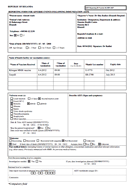
Analyse the following case reports carefully.
Examining the cases reported is among the first important actions that you need to take to understand the situation.
The one common element of the cases in Karoomana region is the vaccine batch U-5773.
This batch was also used in the case reported in Weston Province. All three cases (one fatal) were associated with seizures within 24 hours of immunization.
A different batch of vaccine was used in the case reported in Freeport (Kyogo Province). However, the symptoms reported are different, and there is less evidence for a causal link between the vaccine and the AEFI.

Contact the regional health officer in the province of Karoom.

After informing the national immunization progamme, you phone the office of the regional health officer of Karoomana province (Dr Pasquale Ridou), requesting additional details on the two AEFI cases that he has reported.
- This action is relevant to determine whether the immunization and the AEFIs are causally related, you need to assemble as much information as possible. The regional health officer will aim to send the AEFI to you quickly, but some important information may still be awaited, and missing from the report.
Your intention is to request that a post mortem report is sent for Ahmed Alabi, who died in Hinandi Hospital on 9 April. You also ask whether there is any haematology or serology data from either of the two cases.
Unfortunately, Dr Pasquale Ridou is out of office, with his colleague Dr Ramon Cajal replacing him. On the phone he advises as follows:
"Dear Mr Lombard,
Thank you for your call. A post mortem report on Ahmed Alabi is not availableyet. A post mortem was carried out at Hinandi hospital. – You should contact them directly.I will provide you their contact details."
- In the absence of the regional health officer
(Dr Pasquale), speed is important, so you should consider directly requesting the vaccine samples and a post mortem report.

Request a map of the locations of the AEFIs from your personal assistant (PA).
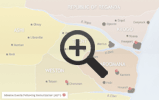
You ask your assistant to assemble a map of the country, showing the distribution of any AEFI reports that may be related to the measles immunization campaign. Within 15 minutes, she has put a map onto a board on the wall of your office and placed map pins at locations of each AEFI).
- Mapping out the cases of AEFI may be helpful to see a local pattern of the occurring events.
- Vaccine reactions may cluster in small areas, in relation to how the vaccine has been distributed, or related to a particular localized programme error. Such clusters will be evident on a map.

Contact the director of the national immunization programme (NIP).

You telephone the director of the national immunization programme, Dr Maia Rayon, and alert her to the possibility that there is a cluster of AEFIs associated with the SIA measles immunization programme in Karoomana Province as well as one each from Weston and from Kyogo province.
- Contacting the director of the immunization programme should be undertaken, when you need additional information to confirm your hypothesis of a cluster.
She says:
"Yes, I have also received copies of those reports today, and it looks potentially worrying. I think we should contact one of the measles experts in the National AEFI review committee, to get some advice on whether this is a significant increase or just a statistical blip."
- The review committee can provide advice on whether the incidence is greater than expected.
You then ask how far the immunization programme has proceeded. She looks up data on her computer, then she says:
"The non-selective mass vaccination campaign started as a phased approach in all regions from 20 February. There are 1.2 million children in Reganda aged between 9 months and 5 years, so we estimated that we would need 1.32 million doses of vaccine. We procured the Klinigen measles vaccine via UNICEF, and distributed the same batch throughout the country in phases Since this is a mass immunization campaign, we ensure that local site visits including verification of the cold chain and the technique by the immunization program are being undertaken.
So far, the programme is progressing steadily in all regions, and reports up to the end of March indicate that 230 000 children have been immunized. By now (18 April) I estimate that 400 000 have been immunized. We might expect one or two serious AEFIs during an immunization campaign of this size with a measles vaccine, but it is a bit early to tell if what we are seeing in Karoomana is significant.
For the MMR immunizations, which children get at 9 months old, we generally see about one AEFI report per 1000 children, but only 1 in every 1 000 000 would be fatal or regarded as serious . But of course these children are in a slightly different age group and we are talking about a different vaccine too.
Anyway, keep in touch and let me know what is happening, particularly if you receive any more reports of adverse events."
- This provides key data about the way the vaccine is procured and delivered.

Contact the national vaccine distributor.
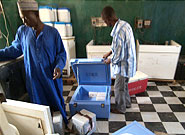
You telephone Mr Yen, the manager of Yuchong Medical supplies; they distribute vaccines throughout the country. You ask him about the distribution of batches of the Klinigen measles vaccine indicated on the AEFI report forms that you have received. You also ask him what stocks are currently held. He looks up the data you request and 30 minutes later a fax arrives:
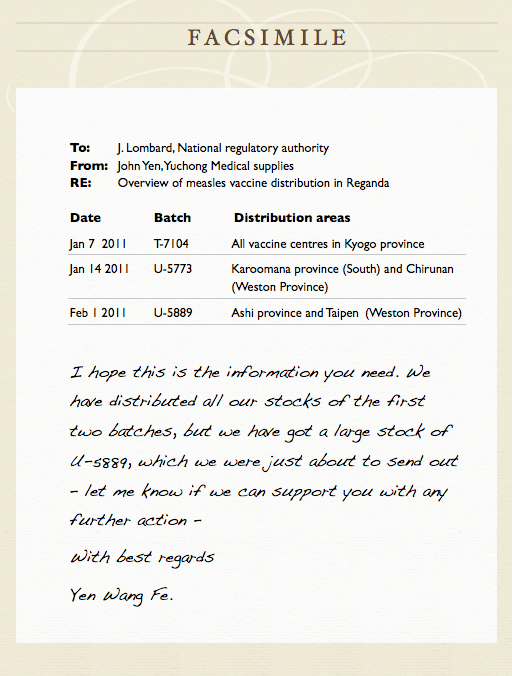
- This may also be relevant information: The distribution of vaccine may not correspond with AEFI reporting; hence correlating vaccine distribution with AEFI reports is required to identify a cluster of events associated with a vaccine batch.

Consult the AEFI review committee.

You look up the membership of the Reganda AEFI review committee and identify Professor John Urumono, who has a particular interest in measles and is an expert in calculating risks associated with immunization. You explain the findings from the AEFI reports and ask whether he considers if there is a risk associated with any of the vaccine batches.
- Experts of the AEFI Review Committee are the key address to analyse information with regards to potential causal links between AEFIs and a vaccine (or vaccine lot). However, at this point, with the limited information available it is too early to contact the AEFI Review Committee. You should wait until the AEFI investigation is completed or at least initiated.
He asks whether you have any data on the number of doses of vaccine which have been given throughout the country and any information on different regions. He needs this information to calculate whether the number of AEFIs in Karoomana and in Weston province is greater than expected.
You send him all the data you have available, including some demographic data from the country.
Region Population Children aged under 5 Kyogo 6 million 620,000 Ashi 1.2 million 145,000 Trent 1.8 million 185,000 Weston 1.9 million 180,000 Karoomana 3.1 million 315,000
His first thought is that there is currently too little information to be certain that this is a real cluster of AEFIs. However, he says that he will investigate it further and will contact you, if he thinks it requires action.
He asks that you should contact him if and when you receive any further reports or information.
- In the early stages of an event, the number of AEFIs reported will barely exceed the background incidence. It is important to isolate the key data (in this case, the measles vaccine and batch number) from other programmes that may be occurring concurrently in the same area. You also need to identify the best possible control group (in this case, AEFIs associated with a different batch of the same vaccine, in the same country).

Request samples of vaccine and diluent to be sent from affected centres.
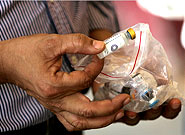
You contact Dr Ramon Cajal, who is investigating the AEFI cases in Karoomana province, and ask him to obtain samples of the Klinigen measles vaccine listed in the AEFI reports.
- This is a relevant activity when you have indications that there may be a quality issues with the vaccine justifying the analysis. Collecting samples – if available - is critical to understand more about the quality of the vaccine administered.
He says:
"OK, do you want unopened vaccine from the clinic where the cases occurred, or just any examples of the same batch of vaccine? If you want the vials that were actually used for the immunization, I am afraid that they went into clinical waste several days ago."
You request 20 samples of unopened vaccine along with 20 ampoules of diluent and also 20 sets of syringes and needles of the same batch from the two affected centres.
He says:
"I know that some vials have been set aside in each of the two immunization centres, I will arrange for them to be sent to you by courier, on ice."
- Samples of the batch will be required for analysis, either by a reference laboratory, or by the manufacturer. It is essential to maintain the cold chain during this procedure.

Request a copy of the post mortem report from Hinandi hospital.
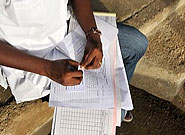
Apart from requesting clinical reports from the other three cases, you request a copy of the post mortem report from Ahmed Alabi, director of the pathology department at Hinandi hospital.
- A post mortem can provide valuable information on the cause of death and should therefore be undertaken where possible.
Having established who you are, and why you want this information, and whether you are authorized to receive it, the head of the department of pathology, says that she will send the report to you as soon as she has seen the histological sections, which are currently being stained.
- The pathology report may help exclude infection, and other coincidental causes of death.

Contact the vaccine manufacturer.
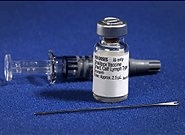
You look up the website of the vaccine manufacturer, Klinigen. There is a considerable amount of information on the vaccine, and one contact point, where you can send an e-mail if you have any concern about vaccine safety or adverse reactions.
- At this stage, there is not enough information to be sure that the vaccine is causing the reactions, but an alert is useful.
You send an e-mail with a possible alert about the measles vaccine.
- If not known already, it is important to tell the manufacturer that you are the correct person for reporting and acting on vaccine safety within your country.
You sign the e-mail stating that your position is with the NRA (Reganda) and you are specifically concerned with vaccine safety.
- When contacting a company/person in another country, language may be a problem. Written correspondence leaves less room for misunderstanding.

